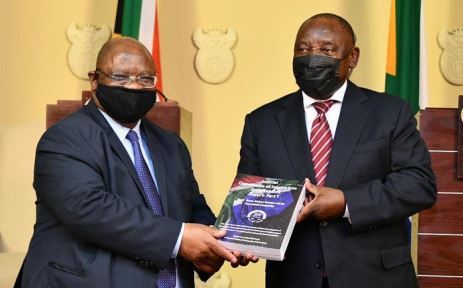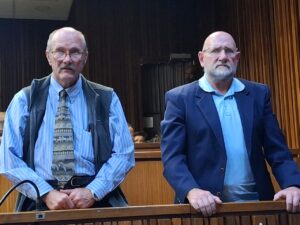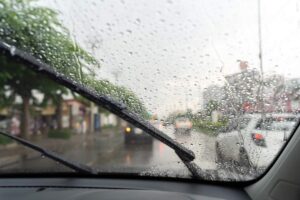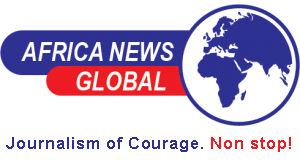By: Clyde N.S. Ramalaine
-President Ramaphosa [The Executive], Chief Justice Zondo [Judiciary ], and Speaker Mapisa- Ngcakula [Legislature] present a case for state capture case for the first time.-
Preamble:
Contrary to popular belief that the Zuma-led administration evidence a State captured, I wish to contend that such a claim cannot stand if the State is correctly defined in its precise constitutional definition. That definition inculcates the three respective components representing the State: the Executive, Judiciary, and Legislature. Therefore, claiming the case of state capture where most of its arms are not implicated is necessarily a dishonest contention.
In this season, my emerging contention is that for the first time under a Ramaphosa’s leadership, a case of State Capture could stand since the Executive, Judiciary, and Legislature appear wrapped in a unique toxic entanglement with Ramaphosa’s political future [second-term ambition] as its nexus. My contention is still predicated on the fact that state capture can only stand where two or more of the arms of the State stand accused in the SA setting. This four-part musing aims to make the case that all three arms of State for the first time are captured, therefore lending credence to my position of state capture as present here and now.
We start in part one by first engaging the efficacy and veracity of the claim for the construct in its uniquely South African ontology in our discourse. In part two, we consider claims of a captured executive under the Ramaphosa leadership. In part three, we turn our focus to the Judiciary to make the case that Judiciary, as represented by Chief Justice Zondo, presents a chance for factional political interest in favour of Ramaphosa. Part four engages the plausibility that the Legislature under the leadership of the Speaker Mapisa-Nqakula attests to capture in the interest of a Ramaphosa’s second-term ambitions.
I, therefore, hope to make the case that the Executive [Ramaphosa], the Judiciary [Chief Justice Zondo], and the Legislature [Mapisa-Ngcakula] in this season evidence a captured State. Ramaphosa’s political ambitions for a second term constitute the nexus from where a synapsis of capture extends into the other two arms of State, while capital’s interest captures him.
State Capture or Corruption? South Africa owes its definition to the DA’s 2009 political campaign, better understood in the 3C’s [Cadre Deployment, Corruption, and Capture]
South Africans often pretend that the term state capture was always part of our discourse. At the first mention of the construct of state capture back in 2016, long before it morphed into a South African common lexicon, some of us asked how state capture in South Africa may be possible. The rationale for asking for such rests on the fact that the State in SA does not translate to a singular sphere or component. It instead consists of three independent dimensions generally referred to as arms of State. There were no accusations levelled against the Legislature and the Judiciary in an epoch when Jacob Zuma representing the Executive, stood accused. Equally, state capture is also a World Bank notion that its officials coined to categorize the dealings and operations of minor oligarchs of Russia, whom they could not explain.
READ ALSO: Part 002: Ramaphosa’s Second Term, the Nexus of a captured SA State
Searching for a definition of the notion of state capture presents several interesting considerations. In the interest of objectivity, we warrant asking who defines it as such and in reference to what and who such is advanced. We know from history that whoever controls the language controls the narrative. It is also noteworthy to appreciate both the object and subject of state capture. Meaning, we warrant appreciating that it is within the environment of the old-Western financial structures such as the World Bank that the construct was christened into its current definition. We know this since Joel Hellman, Governance Specialist in Europe and Central Asia Vice Presidency of the World Bank, defines State Capture as the efforts of a small number of firms (or such groups as the military, ethnic groups, and kleptocratic politicians) to shape the rules of the game to their advantage through the illicit, non-transparent provision of private gains to public officials, he noted that examples of such behaviour include the private purchase of legislative votes, executive decrees, court decisions and illicit political party funding. This concept links the problem of corruption with vested economic, social, and political interests – which in turn form key obstacles to economic reform.
Steven Haber, Professor of Political Science at Stanford University and Research Fellow at the Hoover Institution), sees similarities between the phenomenon of state capture in Eastern Europe and “crony capitalism” For Haber, this represents a case for “vertical political integration.”
The head of Transparency International in Russia, Elena Panfilova, noted that the slow pace of reforms, an inefficient public service, the relative absence of small + medium-sized businesses and the too-speedy privatizations all contributed to a situation; of “cumulative State Capture.”
Like others, I have written on several occasions on various platforms about the innate dialectical tension of a claim of state capture as a scientific construct in South Africa. In my September 3, 2017, INL op-ed, I argued state capture was a hokum argument when I attempted to show how ANC leaders such as Ramaphosa sought to shadow box a non-contending Zuma seeking to tag him while exonerating himself.
I have equally, on numerous occasions, shown out the actual South African ontology of the construct as owing its genesis to a unique but brilliant moment of genius of a DA 2009 political campaign better understood as the triple C strategy. The first C represented the questionable cadre deployment of ANC, the second C meant the word corruption, and the last C stood for capture. This meticulous DA campaign, in my assessment, is arguably the most significant and successful contribution the DA made to our post-apartheid discourse in the time of democracy. Its success lies in that it herded the entire ANC into a proverbial kraal, a kraal from which it could not escape and plausibly never will while destroying each other with self-interest.
History will show how the DA interchangeably used the three C’s to make their case against the ANC. Its flagship aim was to prove that Jacob Zuma’s Executive was corrupt and thus captured. They knew if they could make that case, the ANC would fall like a pack of cards if the moment of a Commission should evidence.
I have also said the ANC does not lead any discourse. A reactive partner usually comes last to the table, empty of original thinking because it does not lead but merely responds to the DA and EFF. Such responses are often rehashed and thoughtless, meaning it ultimately agrees with the opposition as it did on its cadre deployment policy. With its lethargic and misplaced focus, the ANC would never come out of that capture kraal that the DA meticulously herded.
Leading the pack as far back as 2017 was Ramaphosa, who decided to use state capture as his mantra. Meaning, capture, the DA political strategy would mature until ANC leaders saw their own political future and mileage to destroy those they identified as foes and problematic for a particular self-serving agenda. Remember how Ramaphosa, in apparent legal ignorance, abandoned rational thinking for cheap politicking when he accused the Hawks and NPA of sitting on their laurels since they were not arresting those guilty of state capture. Ramaphosa conveniently suggested there was no need to wait for any report of the Commission. Today he explains his inaction on all fronts at the hand of waiting on the final report.
However, if the DA campaign was successful, it could not have occurred without the gracious help of an outgoing public protector Thuli Madonsela. In her post-Public Protector life, she is handsomely rewarded by none other than the godfather of Afrikaner wealth, Johann Rupert. The latter ensured a manufactured position at the original heart of apartheid ideology and thought-life, Stellenbosch University. I back then averred it was Madonsela who politicized the Chapter 9 institution in distinction to her predecessors, Selby Baqwa and later Lawrence Mushwana. Her hashed-exit-chakalaka-report produced in the last weeks in the office took the DA strategy to another level. This partnership between the DA and Madonsela produced state capture as. ‘certainty’ into a South African gospel.
Interestingly enough, one can understand that the entire summation of the Zondo Commission reflects the DA’s political campaign success. The over two years of sitting unveiled the challenges with ANC cadre deployment and corruption, which it concluded equals state capture. How do you ask?
Some of us warned that the DA’s political Campaign’s state capture would take the ANC to its gallows. ANC leaders with self-interest at the core would fight each other until, at the Zondo Commission, they would unravel and leave the organisation hanging as corrupt to its core. Did we not live to see how the Commission exposed the ANC on so many levels as compromised and not remotely to be trusted to lead?
READ ALSO: PART 004: Is the Legislature under Ramaphosa captured?
I am one of those who protest the evidence for using the construct of state capture in the Zuma era specifically since I still contend the case Zondo or any Commission ever proved was beyond doubt corruption, just not state capture. I believe that the Commission cannot confirm state capture, notwithstanding Zondo’s voluminous reports in all its manifold installments, because it was from the start of a political campaign.
I hold this view notwithstanding the academic group who early on in the Commission’s life deemed it their inalienable right to be the final authority on the scientific evidence of state capture in South Africa under a Zuma-Ramaphosa leadership. Unfortunately, their proof came predicated on newspaper clippings and politicians’ claims such as connecting-the-dots Gordhan. Through their factional allegiance as a crafted anti-Zuma campaign, we saw something not uncommon among SA elites across the racial barriers. Therefore, I contend that we never had state capture under the Zuma-leadership if all arms of the State are considered for such claim.
However, I contend the case for state capture is more prevalent in instances where all three components of the State are compromised. I contend that such is the case under the Ramaphosa leadership.
*Clyde N.S. Ramalaine
Political Analyst and Freelance Writer








[…] READ ALSO: PART 001: Is SA in full-blown state capture, where all three arms of the State in a toxic synapsis o… […]
[…] READ ALSO: PART 001: Is SA in full-blown state capture, where all three arms of the State in a toxic synapsis o… […]
[…] READ ALSO: PART 001: Is SA in full-blown state capture, where all three arms of the State in a toxic synapsis o… […]